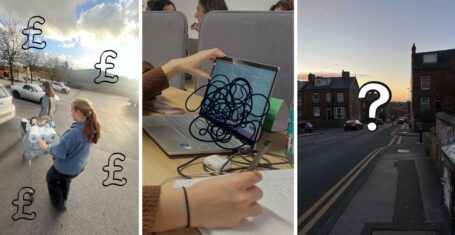
Once and for all – what’s the difference between demisexual and asexual?
Tulisa admitted to being demisexual on I’m A Celeb
Twitter, TikTok and (surprisingly) Facebook were all flooded with positive messages earlier this month when Tulisa said she felt like a demisexual, a sexuality associated but not always connected to asexuality.
Tulisa’s UK comeback tour might have ended with a rage-induced purge of her Instagram, but it began with the British public’s excitement at seeing her face after so many years in the US.
“I feel like I’m demisexual, I need to have a really close emotional bond with someone,” she said in the first week of I’m A Celeb, revealing that while she has been on dating apps like Raya, she had “never gone on an actual date with anyone on there.”
Though Tulisa’s admission was met with love and support, some have tied themselves up with confusion over the difference between asexuality and demisexuality.

via ITV
Is a demisexual the same as an asexual?
Though it doesn’t give your elders an excuse to post derogatory statements online prattling on about “back in my day”, I’ll concede that keeping up with the various sexualities can be a challenge. So let’s make it as clear as possible to avoid confusion.
According to the Cleveland Clinic, demisexual is typically “a person [who] feels sexually attracted to someone only after they’ve developed a close emotional bond with them.”
Meanwhile, an asexual is usually “a person who doesn’t experience sexual attraction.”
Simply put, asexuality is the complete lack of attraction while demisexuality is a complete lack of attraction, except for the people with whom you share a deep emotional connection.
Most Read
You can see that in the Venn diagram of sexuality how asexuals and demisexuals might share some common traits, but again, no one has to adopt any label. Even if you fit either of the above statements, you can still not identify with the term.
Let’s look at their flags
View this post on Instagram
The asexual and demisexual flags are again very similar, but slightly different as they pay tribute to varying aspects of the sexual spectrum.
The asexual flag has four horizontal stripes of equal size, with the colours black, grey, white, and purple meaning:
- Black represents asexuality as a whole
- Grey represents grey-asexuality (someone who experiences limited sexual attraction) and demisexuality
- White pays tribute to non-asexual partners and allies of the community
- Purple represents the community as a whole
Asexuality isn’t always black and white. It’s a spectrum. Demisexuals and graysexuals are in the gray area. We are the gray stripe on the flag. We will continue to exist even if you don’t think we do. 🩶 pic.twitter.com/DWkWoVUSxg
— elle🖤🩶🤍💜 (@scretladyspider) June 4, 2024
The demisexual flag bears the same colours as the asexual flag but in a slightly different arrangement of white, purple, and grey with a black triangle coming from the left. The colours mean:
- Black represents asexuality
- Grey represents demisexuality
- White represents sexuality because demisexuals can feel attraction
- Purple represents the community as a whole
For all the latest reality TV news and gossip, like The Holy Church of Love Island on Facebook.
Featured Image credit: ITV



















